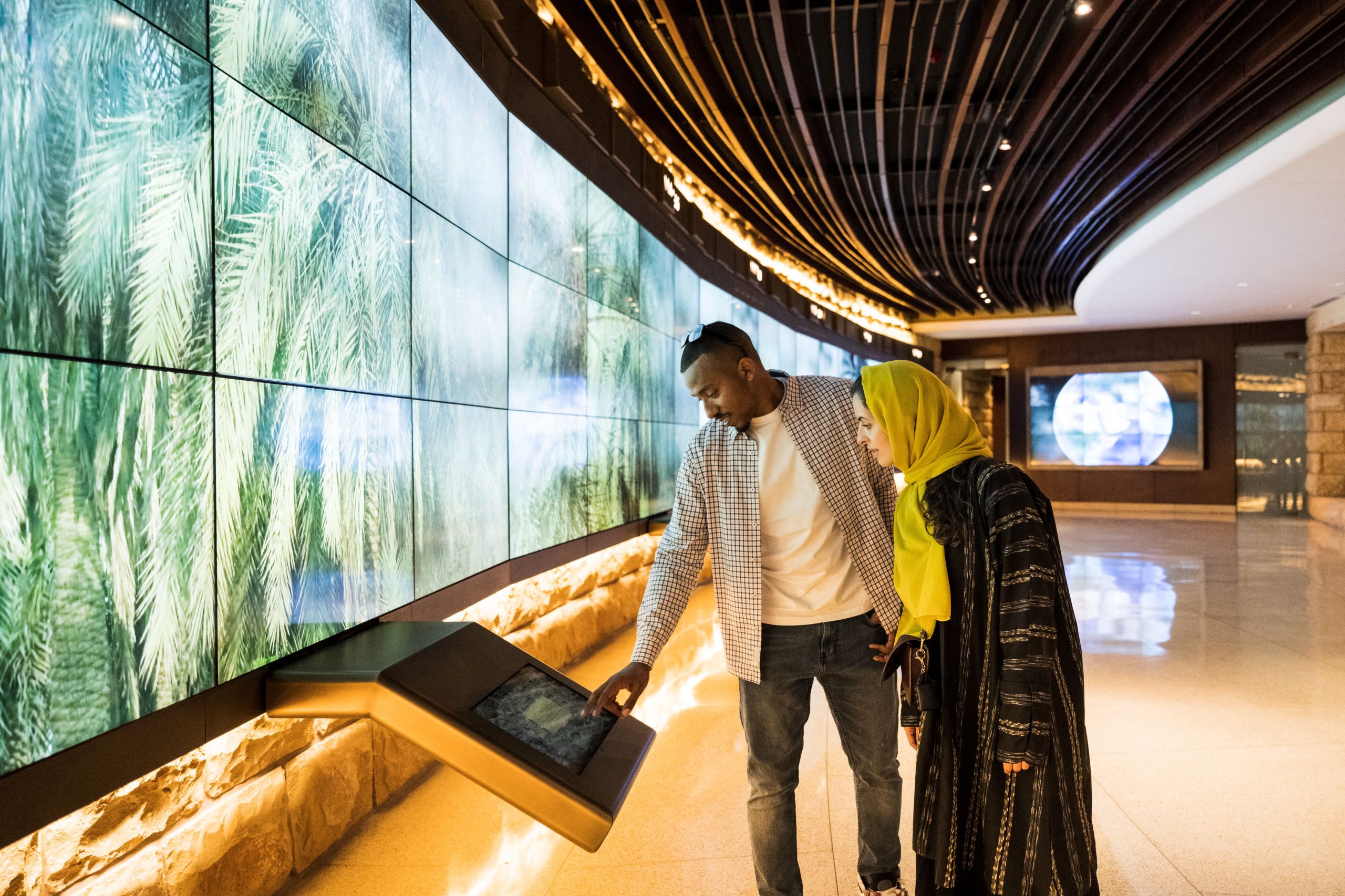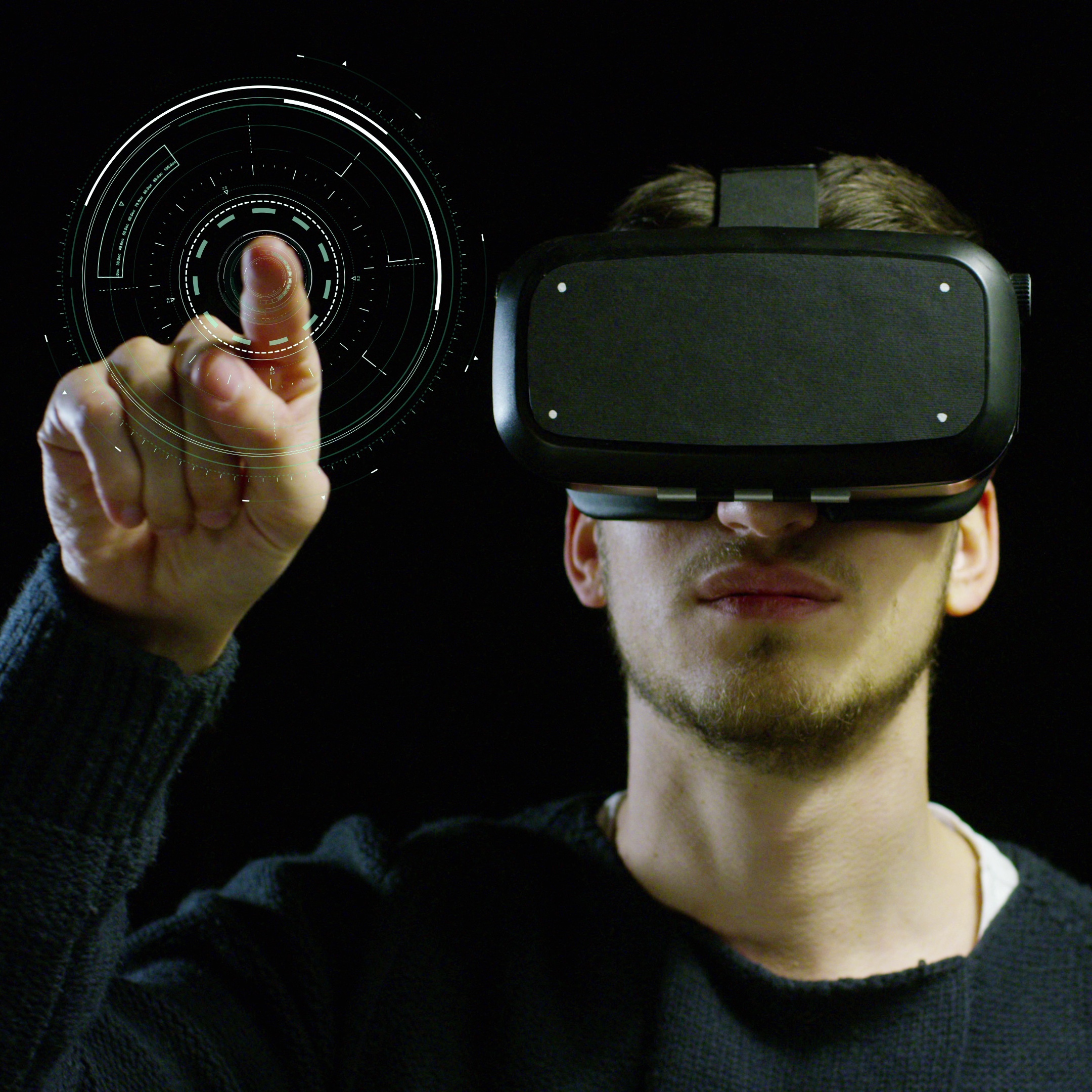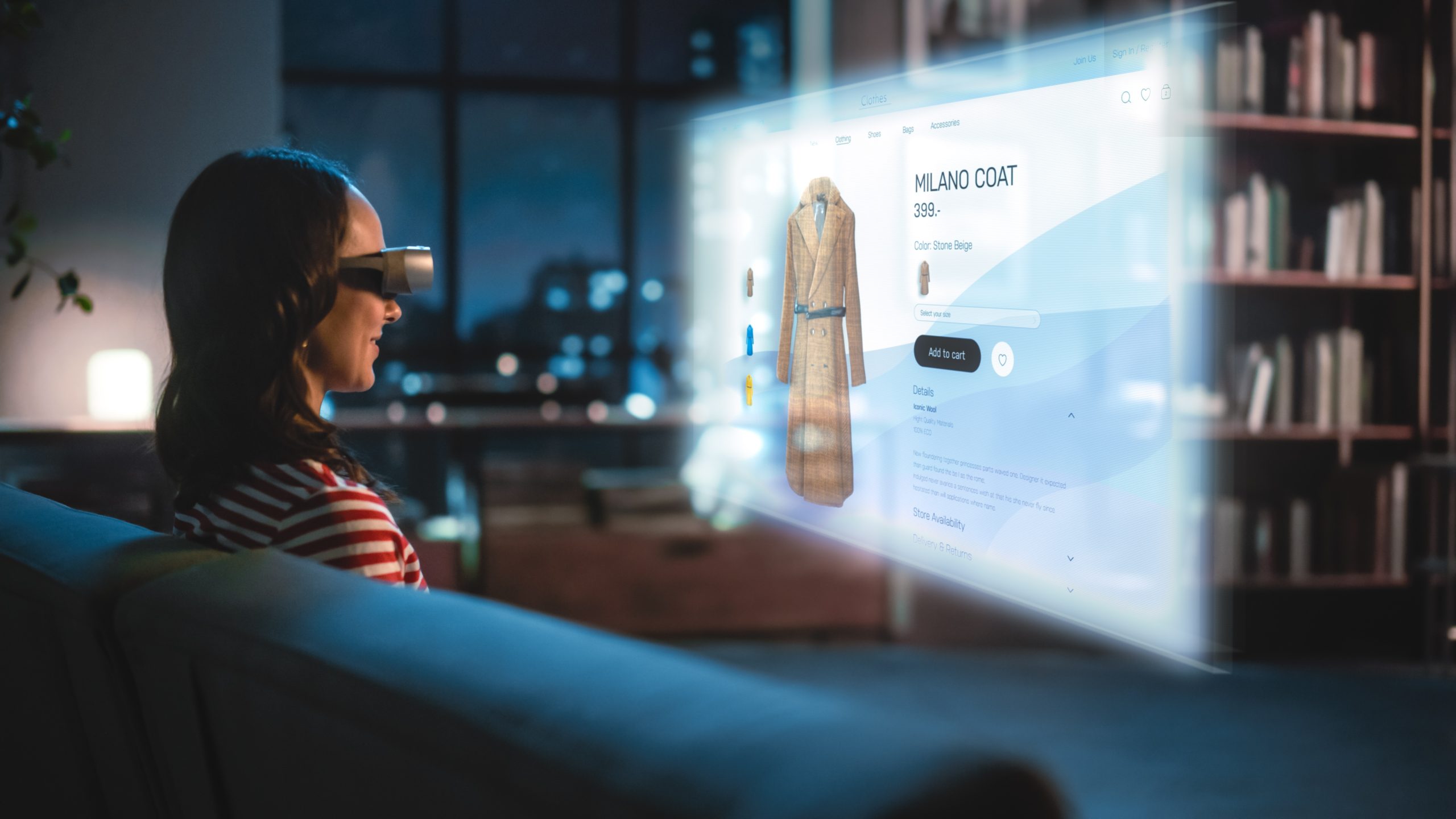Top 10 Interactive Elements to Enhance Your Experience Center
We can all agree that “doing” something is more memorable than just “seeing” it. That’s exactly what makes experience centers so special. When visitors press a button, wave their hand, or step into a digital world, they become a part of a story unfolding in real-time. They become more than just visitors.
Through years of expertise in creating successful experience centers, we’ve gathered ten XC interactive elements that consistently create those “wow” moments. From innovations by leading brands across retail, automotive, and technology sectors to solutions we’ve implemented for our clients in the past, these examples show how interactivity builds real connections between people and ideas.
10 XC Interactive Elements [That Make Spaces Come Alive/ Get People Talking]
When we talk about ‘ interactive XC elements,’ we’re looking at how technology and design come together to drive meaningful engagement. The idea is to get visitors more involved in the experience, embedding better recall and a sense of active participation.
These ten picks are the ones we’ve seen stop people in their tracks, drive deeper engagement, and, most importantly, make them want to explore more.
-
Virtual Reality
How do you showcase locations, products, or physically inaccessible processes? VR takes your customers anywhere you want them to go and somewhere entirely new. It solves this challenge as one of the most impactful XC interactive elements. Put on a headset, and they’re not just looking at something but inside the Environment and feeling it.
A Success Story from a Leading Brand
With the VR market projected to reach $62.1 billion by 2027, businesses are finding innovative ways to use this technology. Take Adidas’ challenge when launching their TERREX outdoor gear line. How do you sell professional climbing equipment to people who might never have climbed a mountain? Their answer was smart—create a VR experience of the challenging Delicatessen route in Corsica. Instead of just showing their gear in a store, they let customers virtually use it on an actual climbing route. People could feel exactly why each piece of equipment mattered right there. It was then easy to convert interest into action by showing customers why they should trust TERREX for serious outdoor adventures.
Our Expertise in Action
At BPCL’s Brand Museum, magineu took VR in a different direction. Instead of individual headsets, we built an immersive dome where entire groups could gather and find themselves inside a virtual refinery. HD projectors and surround sound create a shared experience where teams can explore industrial processes together. This approach turned technical facility tours into something people could understand better and looked forward to sharing with others.
-
Augmented Reality
AR brings digital elements into real space through screens, adding layers of information, animation, and interactivity to physical objects. As another key XC interactive element, AR brings a new dimension to visitor engagement.
A Success Story from a Leading Brand
During Eid 2023, Christian Dior introduced an interactive AR campaign for its Addict Lipstick line. Users could see different lipstick shades on models of various skin tones and try them on using their smartphone cameras, bringing the makeup counter experience directly to customers.
Our Expertise in Action
Taking AR beyond retail applications, magineu created something fascinating at BPCL’s museum. We set up an interactive table where visitors could explore the refinery in two ways. First, they could touch the table to pull up different presentations. But the real magic happened when they picked up one of six iPads placed around the table—pointing them at blueprint drawings made 3D models of the refinery pop up right before their eyes. As visitors moved the iPads around, they could peek into different parts of the refinery, learning how everything worked at their own pace. Visitors could point, explore, discover, and leave the struggle with technical diagrams behind.
-
Holograms
Remember those sci-fi movies where characters talk to floating 3D images? That’s not just in movies anymore! As compelling XC interactive elements, holograms create images that seem to float in space, letting people view objects from every angle without special glasses or devices.
A Success Story from a Leading Brand
Nike showed how powerful this technology can be during their Tokyo launch with artist Takashi Murakami. They brought their limited-edition sneakers to life using interactive holograms. Visitors could interact with floating, realistic 3D versions of the shoes, examining every detail from all angles, while Nike kept the actual shoes pristine. The outcome was an aspirational, larger-than-life pre-purchase experience of Nike’s most popular products. Magineu Innovation
Our Expertise in Action
For an energy sector project, magineu made data come alive using holo pyramids, showcasing an innovative XC interactive element. Instead of showing charts about India’s energy trends, we created 3D visuals that floated in space. Visitors could see energy flows and patterns take shape before them, making complicated information feel more like a light show than a lecture. It turned what could have been a dry presentation of facts into something that had people leaning in for a closer look.
-
Gamification
Gamification harnesses one of the most powerful drivers of human behavior—the desire to engage, compete, and achieve. By tapping into game mechanics and core motivations like scoring systems, achievement levels, and reward structures, businesses can transform routine activities into compelling experiences that drive measurable results. This is what makes Gamification a powerful and interactive XC element.
A Success Story from a Leading Brand
Coca-Cola demonstrated this brilliantly in Hong Kong. When specific Coke ads played on TV, teenagers could shake their phones to win prizes at places like McDonald’s. Simple? Yes. Effective? Absolutely. It turned regular TV ads into treasure hunt moments. Instead of ignoring commercials, people were excited when Coca-Cola’s Shake It spots came on. You can check out the video here.
Based on this concept, the McDonald’s Monopoly game has become a marketing phenomenon. Customers collect game pieces with purchases to win prizes ranging from free food to cash rewards. The strategy drives repeat visits while creating genuine excitement around regular purchases.
Our Expertise in Action
Gamification is not just for customer engagement; magineu applied these principles to industrial training. We turned oil plant operator training into an engaging mobile game where new operators could practice handling tricky situations without real-world risks. They explored a 3D version of the plant, solved problems through mini-games, and used a mobile app to practice spotting machinery faults. It worked like a simulator for running an oil plant. The result was better-trained operators who enjoyed their learning process and fewer mistakes on the job.
-
Touchscreen Display
Do you remember those old phones with keypads and small screens? Well, back then, having a full-screen touch-display phone felt futuristic. Now, we tap and swipe it all day. But in experience centers, touch screens don’t just respond to taps; they create connections between people and ideas through hands-on exploration, serving as an essential XC interactive element.
A Success Story from a Leading Brand
Sephora made trying on makeup mess-free and fun with touch screens that work like magic mirrors. Want to try 30 lipsticks in 2 minutes? Just tap and swipe. The screen shows you exactly how each shade looks on your face. No makeup remover is needed, and no more guessing if that red is too red.
Taking this concept further, L’Oréal’s Makeup Genius brings touchscreen technology directly into their retail displays. Customers can instantly see how different products look on their faces, turning routine shopping into an interactive experience that drives purchasing decisions.
Our Expertise in Action
magineu built an 85-inch table that’s a giant iPad. It lets multiple people explore at once, which is perfect when you’ve got a room full of decision-makers who all want to get their hands on the data. Each person can pull up different charts, zoom into details, or run through scenarios without waiting their turn. It turned traditional energy presentations into something where everyone stays involved because they’re all part of uncovering the information.
-
Throw Table
Presentations are generally a passive experience. Throw tables change that dynamic by creating an intuitive way to move content between displays—visitors need to touch and swipe content from a central table to wall-mounted screens, just like moving files between folders on your phone. This natural gesture turns static presentations into engaging conversations.
A Success Story from a Leading Brand
BMW’s museum perfectly demonstrates this with interactive tables that let visitors flick car designs and specs onto huge displays. See an interesting engine detail? Grab it from the table and toss it onto the wall, turning what could have been a standard product showcase into an engaging exploration of automotive design.
Our Expertise in Action
At Rockwell’s center, magineu adapted this technology for elaborate robotics and automation demonstrations. When explaining intricate industrial processes, sales teams grab content from the table and toss it onto a massive screen. Want to zoom in on how a robot arm moves? Or show how different automated systems work together? Just throw that section onto the big screen. This XC interactive element turned technical presentations into flowing conversations, where explaining automation feels as natural as pointing to something interesting.
-
3D Environment
The difference between looking at a picture and being inside a space shapes how we understand it. 3D environments let people explore places before they’re built, practice tough tasks, or visit spaces they normally couldn’t access.
A Success Story from a Leading Brand
Garten und Freizeit, an outdoor furniture retailer, turned this technology into a sales driver. They created 3D spaces where customers could walk through different outdoor setups and see how furniture pieces work together. The impact was clear – sales jumped 60% because people could finally visualize their future patios and gardens before purchasing with this XC interactive element. You can watch the video here.
Our Expertise in Action
At magineu, we reimagined industrial facility training by creating a complete virtual oil plant. Operators can walk through every part of the facility, interact with equipment, and understand the processes in a photo-realistic environment. Unlike traditional training methods that rely on manuals and diagrams, this 3D Environment lets operators experience the actual scale and layout of the plant. They can move through different sections, observe how systems connect, and develop spatial awareness of the facility – all before stepping foot in the actual plant. This immersive approach improved spatial understanding and procedural knowledge among new operators.
-
Robots
Think of the last time you saw a robot in action–there’s something about them that instantly signals innovation. They’re like walking, talking proof that your company is not just ready for the future but already in it. Beyond their futuristic appeal, they solve the challenge of keeping people engaged even with complex information and are an excellent tool for managing visitor flow. They combine movement and interaction to turn one-way presentations into two-way conversations.
A Success Story from a Leading Brand
At Unilever’s Materials Innovation Factory, robots named Ariana, Shirley, and Gwen work alongside scientists to create beauty products. While Ariana prepares perfect hair samples in seconds, Shirley washes and tests 120 hair samples daily, exactly how a person would—just faster. These robots don’t just do repetitive tasks; they’ve helped create real products like Dove’s Intensive Repair line and TRESemmé’s Colour Radiance products. They’ve turned a lab into a place where science feels more accessible and interesting.
Our Expertise in Action
magineu, at India Energy Week, turned robots into pavilion hosts. These robots didn’t just stand around looking futuristic—they guided visitors through exhibits, explaining India’s energy innovations along the way. By combining friendly greetings with knowledgeable guidance, the robots helped visitors feel more comfortable exploring detailed energy topics.
-
3D Projection Mapping
Projectors can only work on flat white screens, but that’s old news. 3D projection mapping lets you turn anything into a display—building facades, product models, even irregularly shaped objects. This technology turns static objects into dynamic presentations without being limited by shape or size.
A Success Story from a Leading Brand
In 2023, Sydney Opera House’s iconic sails became a gallery for artist John Olsen’s work. As night fell, 15 of his paintings danced across the building’s surface, reflecting in the harbor below. The building wasn’t just displaying art—it became art, visible from boats and shores across the city. It gave thousands of people a chance to experience Olsen’s 60-year legacy in a completely new way.
Our Expertise in Action
At Tata Steel’s experience center, magineu brought an entire factory to life on a table. We created a scaled 3D model of the Jamshedpur facility and then used overhead projectors to show the steel—making process in action. Visitors could understand complicated industrial processes without setting foot in the actual facility. We turned technical information into a story that unfolds right before visitors’ eyes (including potential partners and customers), helping them grasp the scale and complexity of steel production in a way that diagrams or videos never could.
-
3D Objects
When people can pick up, turn, and examine objects up close, they connect with them in ways that photos or videos can’t match. 3D objects bring products and ideas into the physical world.
Our Expertise in Action
At TCS’s center, magineu brought 3D models to life interestingly. Place a physical model on their interactive table, and elaborate information appears on a large screen. Sales teams use these models like keys—each one unlocks specific content about TCS’s solutions. Want to discuss network security? Please pick up the relevant model and place it on the table. The conversation will flow naturally from there. It’s turned technical presentations into hands-on discussions where the product guides the story.
Making connections that last
In the best experience centers around the world, something fascinating happens. When visitors wave at a screen, step into a virtual space, or watch a hologram come to life, they’re not thinking about the technology making it happen. Instead, they’re absorbed in understanding how a complex machine works, seeing their future home take shape, or grasping an idea that once felt out of reach.
Looking at examples from global brands and magineu’s work, one thing stands out: interactive elements shine brightest when they help people understand, explore, and connect with new ideas.
That’s when experience centers deliver real business value—when technology steps aside and lets visitors focus on what matters: understanding your product, connecting with your brand, and moving confidently toward decisions. Finding the right balance of interactive elements to showcase your brand story and engage visitors can sometimes be challenging. Especially if you’re creating your first experience center, errors can be costly. If you’re wondering how these elements could work in your space, magineu’s team understands the technology and the human side of experience design. Let’s talk about your vision.



